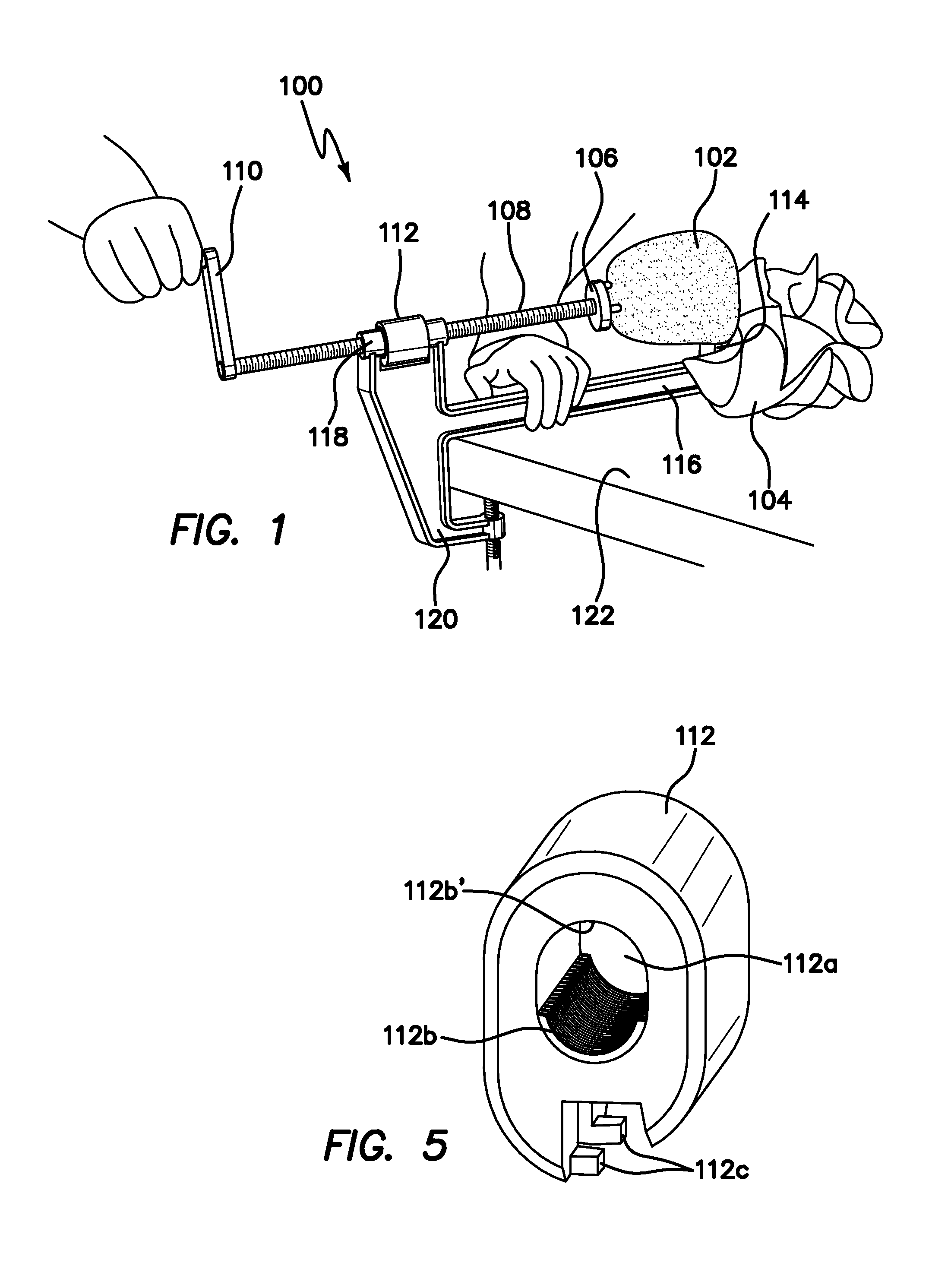Apparatus and method for cutting produce in a continuous curl for the purpose of making a curly spiraled potato chip
a technology of curly spiraled potato chips and curly spirals, which is applied in the field of cutting produce, can solve the problems of increasing the difficulty of use, uneven cuts, and many drawbacks and limitations, and achieves the effects of less expensive and safer, uniform thickness, and simple us
- Summary
- Abstract
- Description
- Claims
- Application Information
AI Technical Summary
Benefits of technology
Problems solved by technology
Method used
Image
Examples
Embodiment Construction
[0027]FIG. 1 is a perspective view of a preferred embodiment of a cutting apparatus, generally denoted by reference numeral 100, being operated cut a potato 102 into a continuous curly chip 104. As shown, the potato is non-rotatably mounted on a spinner 106 which is driven through by a threaded rod 108 towards the distal end of the apparatus 100 by manually rotating a handle 110. When the threads on the rod 108 are engaged with the engaging member 112, cranking the handle 110 clockwise will drive the rod 108 forward. As the potato 102 comes into contact with the cutting blade 114 anchored to the base 116 of the apparatus, it is cut into the continuous chip 104 while being stepped forward by the rod 108 and being rotated by the spinner 106. The thickness of the chip 104 is defined by the pitch of the threading of the rod 108.
[0028]The base 116 provides support to the rod 108 though one or more supporting members 118, which have an bore 112a as best shown in FIG. 3A through which the ...
PUM
 Login to View More
Login to View More Abstract
Description
Claims
Application Information
 Login to View More
Login to View More - R&D
- Intellectual Property
- Life Sciences
- Materials
- Tech Scout
- Unparalleled Data Quality
- Higher Quality Content
- 60% Fewer Hallucinations
Browse by: Latest US Patents, China's latest patents, Technical Efficacy Thesaurus, Application Domain, Technology Topic, Popular Technical Reports.
© 2025 PatSnap. All rights reserved.Legal|Privacy policy|Modern Slavery Act Transparency Statement|Sitemap|About US| Contact US: help@patsnap.com



